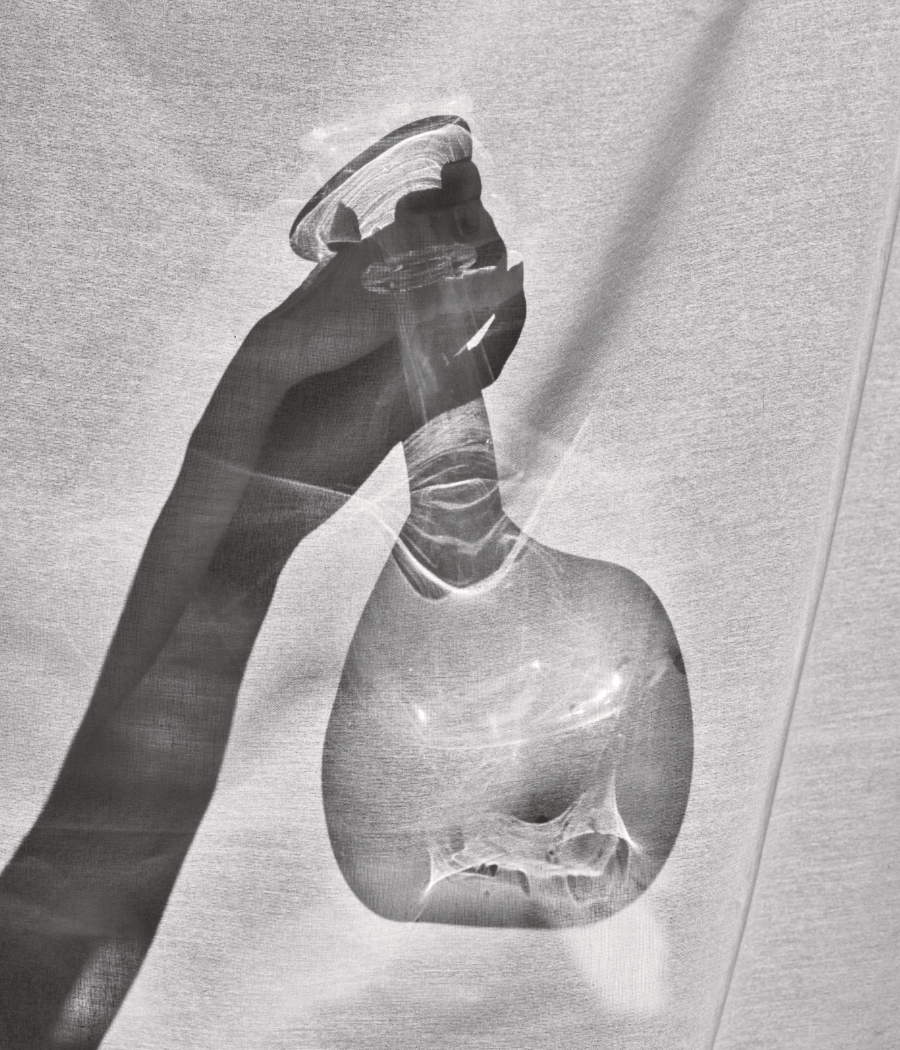In His Domaine — Chef Ludo Lefebvre
In the midst of the action-packed Cook Beautiful press tour, just one hour after touching down in Los Angeles, a city literally roasting with a 102-degree heat wave, I was welcomed into the home kitchen of Chef Ludo Lefebvre. Having cooked since the age of 14, trained with masters in France for 12 years, and moved to L.A. in the ‘90s, Ludo is both internationally renowned and highly influential in the L.A. food scene. His own L.A-based restaurants range from five-course fine-dining outpost Trois Mec, which has racked up awards from Food & Wine, LA Weekly, and many more, to his similarly-acclaimed French bistro Petit Trois, to his French-Mexican collab Trois Familia, to his French fried chicken spot(!!), LudoBird. Though the restos run the gamut in terms of format, they’re all firmly rooted in French culinary techniques. And so, on this steaming-hot day I gathered with this accomplished chef, in his own home, to cook together from the fall pages of my book.
Ludo and I decided to created my sumac whole roasted chicken and the roasted sunchoke salad with Cara Cara oranges. The theme of the day was roasting. I felt calm, cool, and collected…I wish. In reality, I was bursting with a whole slew of emotions – I was beyond excited, mildly nervous, anxious, and honored to cook beside Chef Ludo. I wondered, would he like my recipes, would my technique come through, would I be more of the student, learning from this highly-revered chef, or would I be leading the charge? How this would play out, I had no idea. He was the professional, I was in his domain—his kitchen, his city—but we were cooking my food. Plus, his being oh-so-chic and French only amplified my anticipation.
What brought Ludo and I together was Fisher & Paykel, as we are both ambassadors of the brand. We were first acquainted last year when he taught me how to make the perfect French omelet in the F&P showroom in NYC. He was warm and charismatic and together with his beautiful wife Krissy, we talked food, cookbooks, and kids. I suppose this relaxed connection was the catalyst for an opportunity to work together again. Still, those nerves prevailed as I entered Ludo and Krissy’s home.
We were on a deadline. We had two hours, max, and a hard stop at 3 p.m. The Dodgers were playing, after all, and Ludo and Krissy had some hot dogs calling at the stadium. As one would expect, Ludo runs a tight ship in his kitchen. He was barking orders at the behind-the-scenes team and I worried about whether I would find my footing and whether we would experience an authentic connection once again. Well, two minutes in, that French charm prevailed. Tasks were doled out as Ludo shared the story of his unlikely entrance into food. It was basically the lesser of three evils, a choice that turned out to be far from evil in the end! (Read our interview below to learn more.)
I wondered, would he like my recipes, would my technique come through, would I be more of the student, learning from this highly-revered chef, or would I be leading the charge? -Athena
In divvying up tasks, it was decided Ludo would peel the shallots and I would chop. I would be lying if I said I didn’t try to impress this master chef. I was on my best kitchen behavior, and with my tail wagging and my knife slicing with the most pointed precision I could muster, I received the compliment I was fishing for. “Oh,” he said, “you have nice knife skills.” Well, it was as if the skies opened up and shone down upon me, (although with the heat wave we were experiencing, a better metaphor might be that the skies opened and dumped ice on me). In any case, I was quite pleased with myself. But, my ego perhaps dialed up just a little too high – because next up, Chef schooled me by stating, “You are CHEAP with your butter”. Womp, wooooooomp. Crushing, but not untrue. When I developed my whole roasted chicken, I vacillated on whether to add way more butter under the skin. I was trying to be mindful of health, but in doing so, I was CHEAP on the fat. So, to anyone who makes my whole chicken—double up on the butter.
As I’ve said, the theme of the day was roasting…and I just got royally roasted by Chef Ludo. Nevertheless, that is what cooking is about, being educated by those around you. AND, that playful and silly moment set the tone for the rest of the afternoon together. A banter ensued, and we suddenly found ourselves in a hilarious “Ghost”-like moment as our four hands slathered and slipped over the chicken in buttery, goopy mess à la that identifiable pottery moment from the film.
Chef said this was a dish that he could see on one of his own menus—and this single statement shared in passing just might have been my greatest honor to date.
My saving grace was when we got to the roasted sunchoke recipe. Chef said this was a dish that he could see on one of his own menus—and this single statement shared in passing just might have been my greatest honor to date. Ludo appreciated the combination of contrasting flavor, color, and texture found in the dish. And what I appreciated most was being welcomed into Ludo’s home, and his openness and willingness to cook my recipes and improve upon them. I also resonated with his sage life advice, “If you lose the passion, change what you do.”
One of the biggest culinary lessons I learned that day, besides the butter bit, was to steadily baste your chicken to infuse flavor, moisture, and a little fatty sauce for good measure. “Just shower the bird with love the entire time it is cooking”, Ludo says. I mean, can you think of better advice just a day before Thanksgiving? Butter and baste your bird, people!
Don’t believe a recipe 100%. Use it as a guideline. Make sure you are tasting along the way. Many times I find that a recipe may need a little more acid, a little more salt, little less fat to truly be a dish that I love. You are cooking for your tastes, so have the confidence to make changes. Develop and use your natural instincts. - Chef Ludo Lefebvre
Q&A
Chef Ludo Lefebvre
You mentioned to me how you were first “inspired” to cook. It is not exactly the answer I expected to hear. I love your candor. Care to share your tale?
I was not the best kid. I got kicked out of school. When I was 13 my dad sat me down and told me I had to choose one of three jobs, a hairdresser, a mechanic, or a cook. I would begin my apprenticeship immediately. I loved to eat and so had spent time with my grandmother in the kitchen, so I picked a cook. But know that at the time, there was nothing high-end or luxurious about being a cook (chef). It was no different than being a street cleaner. Many times I was ashamed to tell my friends or others that I was a cook. I was not proud. I worked 16 hours a day. It was not what it is now. I didn’t know I would ever truly be a “chef.” I was a cook, plain and simple.
And what was the genesis to where you are today?
Fortunately I loved the kitchen when I got there. It was brutal work, but I thrived. I think it had the discipline I needed. The kitchen saved me for sure. Turned out that I had a natural talent and passion, and with many, many years of training with the best chefs in France, I developed the passion and my mentors gave me opportunities that allowed me to become who I am today.
Any advice you would offer your younger self starting in this industry? Any advice for me? I know, I know—no restaurants. HA!
If you lose the passion, change what you do. And yes, no restaurants.
How would you describe the food you create to someone who has never eaten at one of your restaurants?
Good??? Haha. It really depends on the restaurant. But it is all based in French technique. At Petit Trois is classic, classic, classic French bistro food. Trois Mec is more playful. It is based in French technique but really brings ingredients and flavors from around the world onto the plate. Ludobird is fried chicken, my way. Trois Familia is a fun, multi-chef collaboration of what French/Mexican breakfast looks like to us.
What is the core value represented in the food?
Taste. I don’t serve because it looks pretty. It is all about the taste.
How has America informed your cooking style?
American opened me up to so many flavors I had never experienced. As you know, I am French, and when I came to America 21 years ago, I was really, really French. I did not know many international flavors. France was pretty closed-minded at the time. Moving to L.A. and having such a rich international culture, I experienced so many new flavors. I had never had a jalapeño, never tasted wasabi, never had Chinese food, (until PF Chang’s, that is). It was so mind-blowing to experience these flavors for the first time. I learned to incorporate these flavors into my food using French techniques.
What first shocked you most about the difference between the French and American eating habits?
The lack of importance on the “daily meal”. It was a fast-eating culture in America with a lot of snacks all day. In France life happens around the table. In America people eat to live. I didn’t see the joie de vivre that celebrated and included food. Things have definitely started to change, but 21 years ago, it was much different.
If the home cook were to learn just three tried-and-true cooking techniques, which would be most important?
1. You need to cook with the seasons. Don’t open a cookbook and just choose a recipe. Make sure the best possible ingredients are available when you want to make the dish. For e.g., don’t waste your time making an asparagus dish in the winter.
2. When you decide on the seasonally-appropriate food, get the best possible ingredients. The freshest fruits and vegetables. Best possible protein you can afford. A good recipe cannot overcome bad ingredients.
3. Don’t believe a recipe 100%. Use it as a guideline. Make sure you are tasting along the way. Many times I find that a recipe may need a little more acid, a little more salt, little less fat to truly be a dish that I You are cooking for your tastes, so have the confidence to make changes. Develop and use your natural instincts.
Five ingredients you couldn’t live without?
1. Butter
2. Fleur de sel
3. Eggs
4. Citrus
5. Mustard
Late-night indulgence after a night in the kitchen?
I don’t really eat at night after the kitchen. I usually just want to take a shower and watch a little French TV to decompress. I will admit to eating cold pizza out of the box when it is left by the kids.
Okay, let’s talk butter. Apparently I am cheap…educate us all on why nine tablespoons are necessary.
You need enough butter to not only flavor the chicken, but you have some leftover to use as a sauce or little topping. Plus it makes it a little more French 🙂
And let’s also talk basting while we are at it. Shed some light on the importance of basting when roasting a chicken.
Basting is the best way to infuse flavor into the meat of the chicken. It also helps to ensure the meat is moist. Whether it will be a butter baste, chicken stock, lemon oil, it doesn’t matter. Just shower the bird with love the entire time it is cooking.
So, you gave me the greatest honor in saying my roasted sunchoke recipe could easily make its way onto one of your menus. Can you speak to what you like about this dish?
I love the different textures of the salad, the contrast between the raw and roasted sunchokes. It was very colorful, bright, and truly a beautiful dish. A super-simple salad seasoned lightly but perfectly flavored. You chose the perfect ingredients for the season.
You are admittedly a cookbook addict. Tell us about your epic cookbook wall. And do you actually cook from them, read from them, appreciate their beauty?
I read every cookbook, usually a few a week. I can’t travel as much as I would love to, so cookbooks open my mind to food, cultures, flavors, and techniques I can’t experience on a firsthand basis. I don’t really “cook” from them, but I do get a lot of inspiration from them.
Your ideal meal is… With…
At home with my family, practicing table manners. 🙂
What is your go-to weeknight meal at home for your family?
During a warm evening, we will typically grill out. Fresh grilled veggies and meat. Nothing complicated. If we are inside, it is roasted chicken, spaghetti marinara, crepes, or a simple omelette and a salad.
Last life-changing food experience (at a restaurant, someone’s kitchen, etc.)?
My first meal at Le Chateaubriand will always be the life-changing moment in my career. Everything about it, the experience, the food, the attitude.
Whole Roasted Chicken with Sumac
by Athena Calderone, From Cook BeautifulIngredients
Serves 2 to 3
- 1 (4 pound) chicken
- 2 tablespoons unsalted butter, cut into small pieces and softened
- 2 teaspoons kosher salt, plus extra for seasoning
- 3 teaspoons sumac, divided, plus more for serving
- 3 lemons, halved
- 3 heads garlic, halved
- 4 carrots, peeled and quartered
- 4 small Yukon Gold potatoes, scrubbed and quartered (about 1½ pounds)
- 2 small yellow onions, quartered
- ½ cup extra-virgin olive oil, plus more for drizzling
- Freshly cracked pepper
- 1 cup labne or full-fat Greek yogurt
- Toasted sesame seeds, for serving
- Flaky sea salt, for serving
The Prep
Place the chicken in a large roasting pan. Using your fingers, gently separate the skin from the flesh across the breasts and drumsticks. Rub the butter between the skin and the flesh. Rub the salt and 2 teaspoons of the sumac all over the chicken. If time permits, refrigerate the chicken, uncovered, for at least 6 hours and up to overnight.
Preheat the oven to 425ºF. Squeeze half of one lemon over the chicken and place it inside the cavity along with a half head of garlic. Scatter the carrots, potatoes, onions, and remaining lemons and garlic around the chicken. Drizzle the vegetables and chicken with the ½ cup oil. Sprinkle the vegetables with the remaining 1 teaspoon sumac and season with salt and pepper, tossing until the vegetables are evenly coated. Roast, tossing the vegetables occasionally, until the chicken and vegetables are deep golden and cooked through and the chicken registers 165°F in the thickest part of the thigh, about 1 hour and 15 minutes. Allow the chicken to rest for 10 minutes before carving.
Drizzle the labne with oil and sprinkle it with the sesame seeds, some pepper, sumac, and flaky sea salt. Serve it alongside the chicken.






























